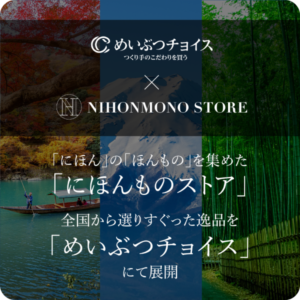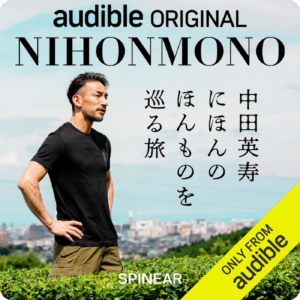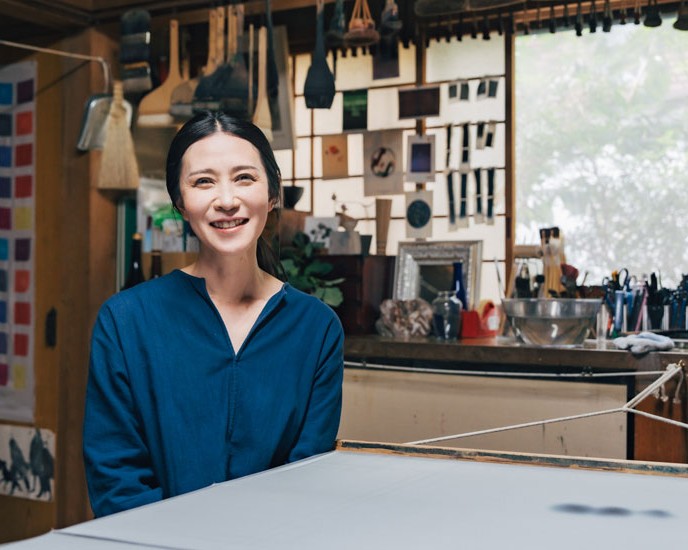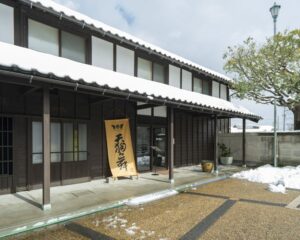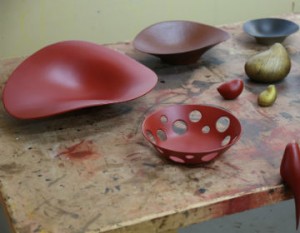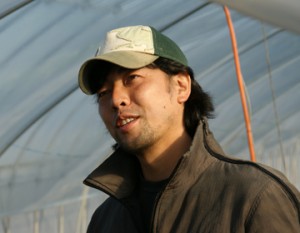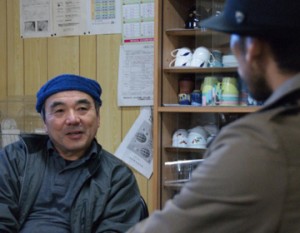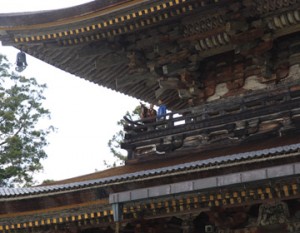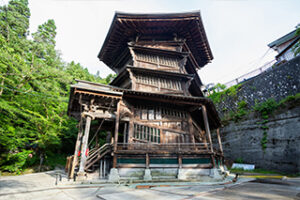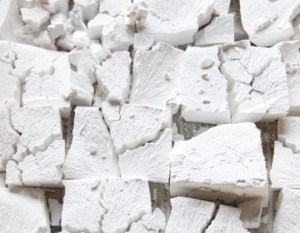Beautiful flowers such as cherry blossoms, peonies, and water lilies are depicted on fabric. The delicate lines and gradations of these flowers give off a bewitching charm and appeal to the viewer’s heart. What is the charm and future of “wax dye” as depicted by a dye artist who is pursuing new possibilities?
Dyeing artist who carries on the tradition of wax dyeing to the present day
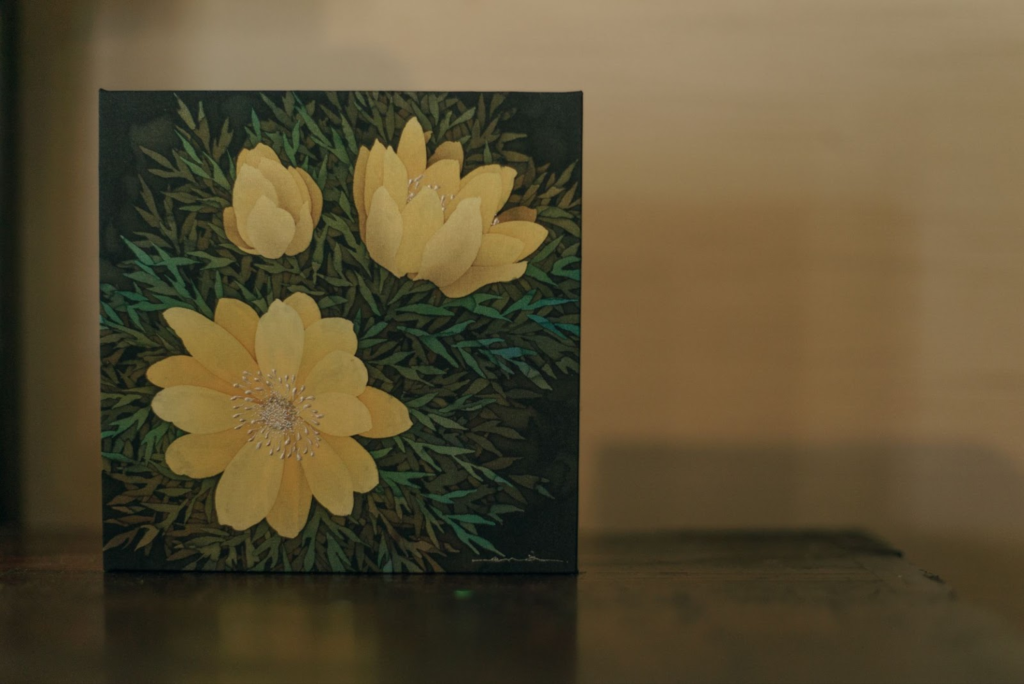
Ena Furuya, a dye artist who has a studio in Koshu City, Yamanashi Prefecture, surrounded by mountains and rich in nature, paints seasonal flowers using a technique called “wax dyeing. In recent years, she has been actively involved in tie-up projects with companies and stores, as well as holding solo exhibitions in various locations. Ms. Furuya’s roots lie in the strong influence of her mother, who also worked as a wax-dye artist.
Touching my mother’s art

Until around the upper elementary school years, the act of painting was so commonplace that she mistakenly believed that her parents painted pictures in every house. Furuya grew up watching her mother, who was active as a dye artist and exhibited her work in two exhibitions every year while raising her children, and she followed her mother’s example by going to art college and yearning to become an artist.
After graduating from high school, she entered Musashino Art University’s Department of Crafts and Industrial Design, where she studied mainly textiles. When graduation was imminent, he had no intention of becoming a salaried worker in a corporate organization. I think it was a shallow idea due to my youth,” he said. After graduation, he went on to graduate school and continued to deepen his understanding of art while working as a researcher. In the process, she came into contact with various works of art, but in the end, she chose to become a dye artist like her mother.
There was a time when I was devoted to Japanese-style painting, and during that period I learned about the various paths one can take as an artist, but I had no hesitation in pursuing a career as a dye artist,” he said.
However, the road was not a smooth one, and in the early days of his career, his works did not see the light of day, and he sometimes worried about “the meaning of continuing to create my own works. In 2013, a major turning point came when he graduated from graduate school. Upon graduating from graduate school, he was asked to create a piece to be used as the title backdrop for the historical drama “Yae no Sakura. The challenge was to create an unprecedented large-scale work measuring 8 meters in length, and once the drama began airing, it received a huge response from all corners of the world.
When I found my name in the credits, I was truly happy that I had continued to create artwork.”
A technique called “wax dyeing

In “wax dye”, hot melted wax is applied to the cloth with a brush, and when it dries, dye is applied with a brush or brush, and finally the wax is washed off to create the pattern. The repeated process of “painting and dyeing” is then washed out and fixed. The grazing and cracking of the brush also give the fabric a unique texture, and the repeated layering of wax creates delicate hues and depth of color. Once dyed, the artist must wait for the dye to dry, and even a small-scale work takes several weeks to complete.

Mr. Furuya is particular about “dyeing,” and instead of soaking the cloth in dye, he colors it as if he were painting with a brush and brushes. In some cases, the color of the white cloth is used as it is, while in other cases, the colors are dyed and wax is placed on top of the dye that is to be kept, and the colors are dyed one after another, from light to dark, to express unique gradation and shading. Furuya says with a laugh, “I don’t think there are many waxwork artists who put so much time and effort into the time-consuming wax-dyeing process. He says, “Sometimes I think it is a lot of work, but it is because of the time and effort I put into it that I am able to expand my range of expression.
I have loved drawing pictures since I was a child, and of all the dyeing techniques, wax dyeing is very close to that process. It is very attractive to me.
Commitment to Wax

Furuya uses paraffin wax, which is commonly used for candles and crayons, and microwax, which has a high melting point and is both strong and flexible. She uses paraffin wax alone when she wants to make cracks, or blends the two waxes when she wants to draw patterns, depending on the compatibility with the fabric, temperature, humidity, etc., and according to her purpose.
The history of wax-base dyeing in Japan dates back to the Nara period (710-794), when beeswax from the hives of honeybees was used. However, when the Japanese envoy to Tang Dynasty China, which was the key to imports and exports, was abolished in 894, beeswax became difficult to obtain, and the culture of beeswax dyeing died out as an “expensive dye” until the early Taisho period (1912-1926), when petroleum raw materials were imported.
The wax-dyeing industry is gradually making progress,” he says. There was a time when he used beeswax to stick to his roots, but he is now using new chemical materials to create better works, while seeking his own unique expression.
Coming and Going between Craft and Art

There are various theories about the origin of braze-dyeing, but the fact that braze-dyed cotton cloth has been found at the Niya ruins in Xinjiang Uygur Autonomous Region in northwestern China indicates that the technique already existed around the 2nd or 3rd century. Around the time of the great drama broadcast, Furuya, who was interested in the historical background of the objects he was making, went to Shanghai, China for a year. While witnessing the reality of Shanghai’s large art market, he also spent a fulfilling year learning the ancient art of braided dyeing, which has been passed down from generation to generation by inland ethnic minorities.
The ethnicity of the people is evident, with different tribes using different patterns. I felt that they were not treated as art, but more like “crafts” or “souvenirs. Compared to Japan, where there are only a few makers, the authentic Japanese wax seal dyeing, where the technique has been handed down from ancient times, was experienced firsthand, and the depth of the culture was strongly felt once again.
While disseminating and passing on the history of waxbonding in Japan, he is also exploring new possibilities as an art form. I want to be somewhere in between craft and art,” said Furuya, her eyes looking ahead to the future of brazed dyeing.
A New Form of Succession” Connecting Wax Dyeing
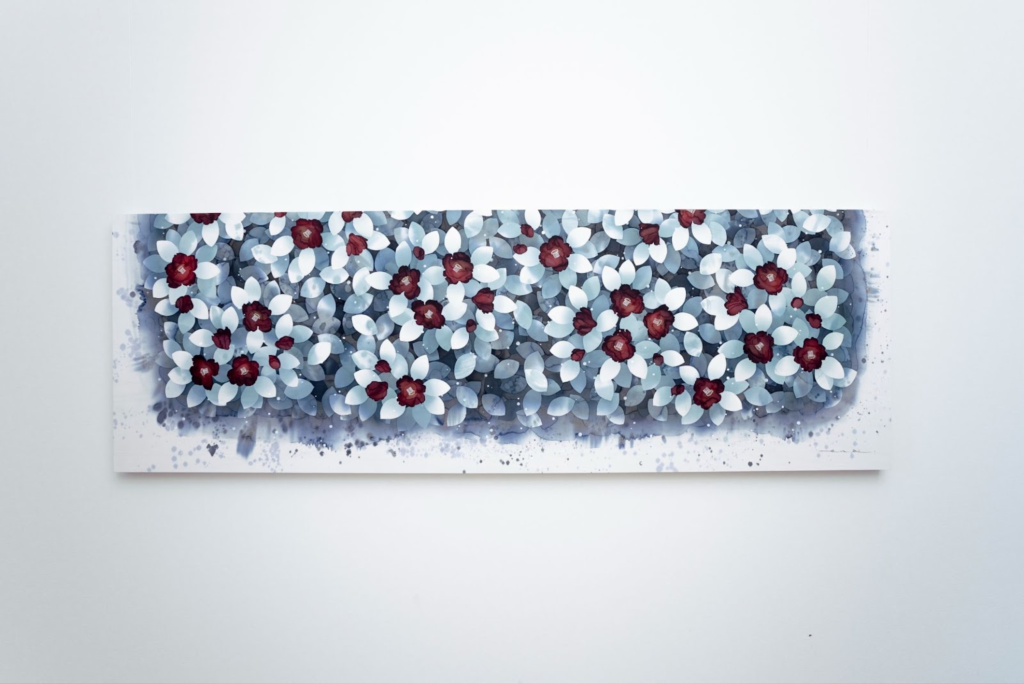
Dyeing and weaving techniques such as wax-bleeding were mainly used for practical items such as kimonos, and now that kimonos are no longer worn on a daily basis, the number of artists in Japan has decreased to a few, according to Furuya. In order to put a stop to this situation, Furuya has designed confectionery boxes for a Japanese confectionery in Yamanashi called “Wanoka,” created art packages for the ice cream brand “Häagen-Dazs,” participated in the craft project “LEXUS NEW TAKUMI PROJECT” sponsored by Toyota Motor Corporation’s brand “LEXUS,” and is currently working on a new project called “LEXUS NEW TAKUMI PROJECT, a craft project sponsored by Toyota Motor Corporation’s brand “LEXUS”, and solo exhibitions held overseas. Through these activities, he is spreading the traditional Japanese technique to the younger generation and other people who have never heard of waxwork dyeing before.
My goal is to continue to make artwork for the rest of my life,” she said. I would like to pursue my own work in an environment where I can continue to do so for as long as possible.
While respecting the history of the craft, he sublimates it into art by flexibly incorporating new essences. While there are many traditional crafts and valuable cultures in Japan, Furuya’s activities may serve as a milestone for the future as a “new form of inheritance.
